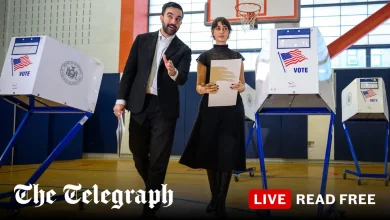Tennis Mailbag: Is the Davis Cup Still Relevant?

Hey everyone!
• On this week’s Served podcast, we count down the top 10 matches of 2025, as voted on by you all.
• Here’s Montana and its opposition to selling off public land. For the soccer crowd, next week’s 60 Minutes features Lamine Yamal.
• This piece from tennis-lovin’ Katie Baker—with a reference to the Newport debacle—is a joy to read.
• Zizou Bergs got unlucky in the Davis Cup last week. Judging from his father’s message following his loss, he hit the parental lottery.
• Your men’s and women’s NCAA singles champions: Michael Zheng and Reese Brantmeier.
• This week’s unsolicited book recommendation: Touched by Matt Morrison.
• HAPPY THANKSGIVING (to those who celebrate)!
Onward with a short mailbag …
Jon,
I think most would agree that the Davis Cup is a shadow of its former self. Most of the negative commentary I’ve read about it cites the schedule and the lack of the home country competition. For me, there is far too much focus on the world’s top singles players, though this is how the competition is sold to us. Are we to see a playoff between the world’s top 10 singles players every year (or every two years as some suggest)? Davis Cup is supposed to be an inter-nation competition and is the only one of its kind (for the men). The old reverse singles format also needs to be reinstated so that the competition is not dominated by countries with two top singles players and doubles becomes an afterthought. The competition this year was highlighted by the few doubles matches that were played.
I will watch for your forthcoming mailbag with interest.
Sincerely, Peter W. French
• Sadly—if tellingly—there were several of Davis Cup communiques this week, and virtually all of them lamented the state of the competition. “Is it too late for [Carlos] Alcaraz & [Jannik] Sinner to opt in for Davis Cup?” JB from Portland asked. “When you watch the Italia vs. Belgium Davis Cup … between [Flavio] Cobolli and Bergs, you realize what a joke Laver Cup is,” J.G. from New York lamented.
My overarching question about the Davis Cup: Has it outlived its usefulness? For decades, it was a referendum on countries and their systems. Our warriors against yours. How would, say, the Aussies fare against the Americans?
A) In this globalized world, players hail from, train and live all over the world. Alex de Minaur is off to train in Spain. Novak Djokovic has relocated to Greece. Japan’s Naomi Osaka lives in California. Half of tennis, it seems, lived in the U.S. to play college tennis. All of this is healthy. Technology and freedom of movement have made borders and nationality less essential in pro tennis. Athletes are empowered to go where the money and opportunities are. But this blunts interest in country-on-country competition, does it not?
B) The frantic scheduling and the congealed tennis calendar scare off the stars. (If Sinner and Alcaraz fall out of the competition, does it make a sound?)
C) If you really want country vs. country competition, there’s always the Olympics every four years.
Hey Jon,
Hope you’re doing well. As we watch the Davis Cup Finals this week, I can’t help but feel that Davis Cup and BJK Cup would really benefit from taking place every two or four years instead of every year. Top players would be more likely to play (Jannik Sinner and Carlos Alcaraz support changing to a biennial competition), home and away ties could potentially be brought back with the extra time to do the qualification rounds, and the “World Cups of Men’s and Women’s Tennis” would actually have some buildup and weight behind them. Any thoughts?
Collin
• While we’re here, read Ben Rothenberg’s investigation of 1xBet, the Russian-founded betting website that has a deal with the Billie Jean King Cup (among other tennis and sports entities.)
The big issue: For many countries’ tennis associations, the revenues from the Davis Cup and Billie Jean King Cup are central to their funding. So turning this into a biennial and quadrennial competition would really hinder their finances.
But I’m with you, in theory. Scarcity would help lure top players to commit. It would also imbue the competition with more heft among casual fans.
As it stands, Italy won the Davis Cup without its top players. I’m not sure if that’s more a statement about the depth of Italian tennis, or the fading relevance of this competition.
Carlos Alcaraz and Jannik Sinner dominated tennis this year, splitting the 2025 major titles. / Robert Deutsch-Imagn Images
Hey Jon seems like Alcarez & Sinner deserve serious consideration for [Sports Illustrated’s] Sportspeople of the Year. That photo of them with arms around each other after the ATP Finals says it all: the best at their sport, full of respect for each other.
@twitchell_keith
• I like your thinking. Ordinarily, I’m inclined to lobby for more tennis. But If we are being honest here (and when are we not?), I think it’s hard to confer a Sportsperson of the Year honor on a player the same year he served a suspension tied to doping.
I’ve been pretty clear that I think Sinner’s positive test was a result of (gobsmacking) negligence and carelessness, not a nefarious attempt by him to subvert fair competition. That he couldn’t have received zero punishment, but a one-year suspension seemed unduly harsh. That either the threshold levels in tennis for a positive test are unreasonably strict, or the sport is so dirty that both 2025 Wimbledon singles champions weighed the risk against reward and still decided to cheat. (Obviously, I think it’s the former.) That Sinner did his time, faced his humiliation, and now deserves the right of rehabilitation.
All that being said, it’s hard to confer on him a Sportsperson honor this year. For the same reason, I would be inclined to vote for Alcaraz as the ATP’s Player of the Year, even if they won the same number of majors.
Hi Jon,
I’ve loved your recent discussions with Andy [Roddick] about the tour scheduling issues. It obviously needs a fix, all the more so with a new Masters 1000 on the way. With all the complaints from top players, I feel like the ATP and WTA are missing an opportunity. Why force your best players to play the most, rather than creating new marketing machines out of lower ranked players? With [Valentin] Vacherot’s recent run in Shanghai I found myself watching second round matches at the Paris masters to see if he could top his cousin for a second time in a row. With João Fonseca going for his first 500, I’m checking scores at the tournament in Basel for the first time ever. Etc. Etc.
The stars will be stars and will always drive the most dollars, but why not try to create more stars while allowing the top stars to rest, recover, and deliver their top level tennis at the events that matter most? That way more players become household names and interest grows, even at the tournaments Alcaraz and Sinner decide to skip.
• Andy’s fall schedule idea answers a lot of these concerns. Wrap the season earlier so that the top players—who routinely go deep in events—get the rest they deserve. Shift the 250s and 500s so the players seeking opportunities can get them. It might be the Vacherots, seeking to ride a hot hand, but it might also be former stars trying to improve their rankings or secure benefits.
Jon, I love your podcast with Andy Roddick! But you brought something up last week and never answered the question. How CAN Carlos Alcaraz and Jannik Sinner be tied with the same number of points against each when Alcaraz has won 10 of their 16 meetings. Can this be right?
ML, NYC
• This is the beauty—and/or cruelty—of the tennis scoring system. It’s impossible to win fewer points and lose the game. But it’s entirely possible to win more points than your opponent and still lose the set, or even the match. It’s about winning the right points, not the most points.
Take results like the instant-classic 2025 French Open final. Alcaraz won the match, but Sinner actually won the points battle,193–192. Other times, Alcaraz won more points. In Cincinnati (a match that ended in retirement at 5–0), Alcaraz won 21 points to Sinner’s eight. At Wimbledon, Sinner won the points matchup 124–114. It’s easy to see how this evens out 50–50, even accounting for a head-to-head that is far from 50–50.
Let’s level-set. Two rivals, more than 3,300 points played, and they have the exact same number of points won? What are the odds? Well, not as low as you might think. For one, players usually win matches handily if they win 52 or 53% of the points played. So we’re talking about a 0–100 range here. Also, having termed Sinner and Alcaraz rivals, we proceed on the premise that they are evenly matched to start with.
Put another way, if they flipped coins 3,302 times and tied at 1,651, it would be noteworthy. But not, perhaps, gobsmackingly so.
Hey, a question. Have you ever seen a Hawk-Eye replay show a ball “tangent” to the line? That must happen, right? I am guessing that the algorithm decides in or out, and then adds a discernable overlap or gap as appropriate. Agree? If so, is this known? Discussed?
DT
• From our friends at Hawk-Eye: “Hello, I don’t think we’ve ever seen it exact to the line as we go to about six decimal places so [it] would have to be 0.000000 which is very unlikely.”
HAVE A GOOD WEEK, EVERYONE!





